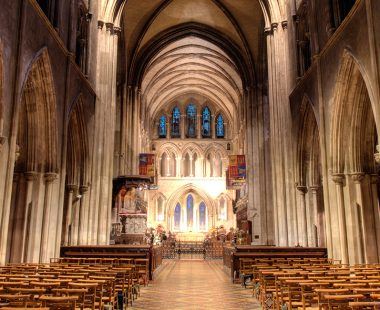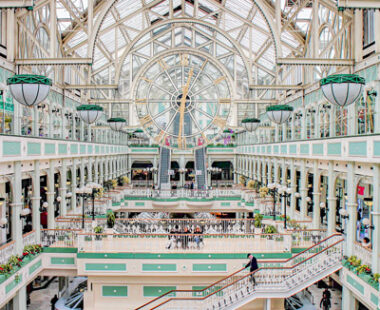By Darragh Peter Murphy
Whether you love Old Masters or modern art, contemporary sculpture or Impressionist paintings, Dublin has an art gallery to satisfy your cultural cravings.
Galleries
On the northern side of Parnell Square, you’ll find Dublin City Gallery The Hugh Lane. Although not everyone is enamoured by the emphasis placed on the studio of Francis Bacon, the rest of the art gallery – named after a Corkman who returned to Dublin after striking it big in London – is stupendous. Here you’ll find Renoir, Manet, Morisot and Pissaro – and, a highlight, the Stained Glass gallery. There is also small newer section devoted to the controversial Irish abstract painter Sean Scully, who draws heavily from Rothko.
For modern art away from the city centre, the Irish Museum of Modern Art in Kilmainham, an extraordinary display in the enchanting surroundings of a 17th-century Royal Hospital. IMMA focuses on emerging artists and established 20th-century names like Lucien Freud.
- Dublin City Gallery The Hugh Lane exhibits Irish and international art
- Fergus Martin exhibition at Green on Red Gallery
Further east along the north side at Spencer Dock lies the Green on Red Gallery at Park Lane, representing some of the finest new and contemporary art on the market. Look out for their thematic exhibitions like Screentime (with PaperRad/Cory Arcangel, Alan Butler, Ben Jones, David O’Reilly, London collective They Are Here and Conor McGarrigle), and the (forthcoming) Refuge show. Other, small galleries that are not funded by the State include the Kerlin Gallery near Grafton Street, and Mother’s Tankstation down the quay towards Heuston Station.
Further east along the north side at Spencer Dock lies the Green on Red Gallery at Park Lane, representing some of the finest new and contemporary art on the market
National Gallery
If that’s not enough, pop over to the jewel in the crown: the newly revamped (and free) National Gallery of Ireland off Merrion Square, at the heart of the city’s government and museum district. The gallery is home to a celebrated Carravaggio, the Taking of The Christ.
It’s a perfect example of the artist’s use of the sfumato and chiaroscuro modes, which partly came about due to Carravaggio’s habit of spending his money on alcohol rather than on brighter, more expensive, colours. The artist sends himself up in the painting, with a self-portrait holding a lantern to the right of the main subject.














